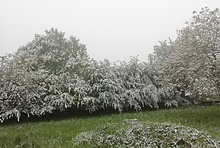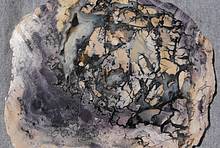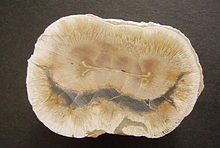Home PageAbout MindatThe Mindat ManualHistory of MindatCopyright StatusWho We AreContact UsAdvertise on Mindat
Donate to MindatCorporate SponsorshipSponsor a PageSponsored PagesMindat AdvertisersAdvertise on Mindat
Learning CenterWhat is a mineral?The most common minerals on earthInformation for EducatorsMindat ArticlesThe ElementsThe Rock H. Currier Digital LibraryGeologic Time
Minerals by PropertiesMinerals by ChemistryAdvanced Locality SearchRandom MineralRandom LocalitySearch by minIDLocalities Near MeSearch ArticlesSearch GlossaryMore Search Options
The Mindat ManualAdd a New PhotoRate PhotosLocality Edit ReportCoordinate Completion ReportAdd Glossary Item
Mining CompaniesStatisticsUsersMineral MuseumsClubs & OrganizationsMineral Shows & EventsThe Mindat DirectoryDevice SettingsThe Mineral Quiz
Photo SearchPhoto GalleriesSearch by ColorNew Photos TodayNew Photos YesterdayMembers' Photo GalleriesPast Photo of the Day GalleryPhotography
╳Discussions
💬 Home🔎 Search📅 LatestGroups
EducationOpen discussion area.Fakes & FraudsOpen discussion area.Field CollectingOpen discussion area.FossilsOpen discussion area.Gems and GemologyOpen discussion area.GeneralOpen discussion area.How to ContributeOpen discussion area.Identity HelpOpen discussion area.Improving Mindat.orgOpen discussion area.LocalitiesOpen discussion area.Lost and Stolen SpecimensOpen discussion area.MarketplaceOpen discussion area.MeteoritesOpen discussion area.Mindat ProductsOpen discussion area.Mineral ExchangesOpen discussion area.Mineral PhotographyOpen discussion area.Mineral ShowsOpen discussion area.Mineralogical ClassificationOpen discussion area.Mineralogy CourseOpen discussion area.MineralsOpen discussion area.Minerals and MuseumsOpen discussion area.PhotosOpen discussion area.Techniques for CollectorsOpen discussion area.The Rock H. Currier Digital LibraryOpen discussion area.UV MineralsOpen discussion area.Recent Images in Discussions
Techniques for CollectorsCopper minerals and aqueous ammonia

1st Jul 2011 21:14 UTCHoward Heitner

5th Jul 2011 00:27 UTCWilliam G. Lyon
23rd Sep 2011 13:50 UTCReiner Mielke Expert
Tested a piece of Turquoise from Cornwall, Gunheath Clay pit, no reaction. Will try boleite as soon as I can find my testing material (have to start organize those, my pile is getting too big!). May be a while until I get around to that though, it will make a good winter project. LOL
23rd Sep 2011 17:44 UTCPeter Haas
Why not reading an appropriate inorganic chemistry text book instead of re-inventing the wheel ?
If you can read German, try to get a copy of this book, which contains all the information you're looking for. For each element, reactions with a number of common reagent solutions - including weak and strong acids, ammonia, NaOH, carbonate and sulfide - are listed and explained. Then, a full list of specific reactions that can be used for testing is provided, including information on their selectivities (all possible interferences are listed), advice on preparation of the reagent solutions, etc.:
Jander, G., and Blasius, E.: Lehrbuch der Analytischen und Präparativen Anorganischen Chemie. Hirzel Verlag, Stuttgart.
A second-hand copy of the 1986 or 1983 editions can be obtained for less than 5 Euros:
http://www.amazon.de/gp/offer-listing/3777603791/ref=sr_1_3_olp?s=books&ie=UTF8&qid=1316791681&sr=1-3&condition=used
Unless you just started studying chemistry, there is no need to buy a copy of a more recent edition. Professor Blasius died in 1987, and in the later editions (post-1986), several co-authors have reorganized the content. Those parts that are useful for mineral testing are best represented in the 1983 and 1986 editions though. I bought my own copy in 1984 and I'm stil frequently using it.

23rd Sep 2011 21:22 UTCHoward Heitner




Mindat.org is an outreach project of the Hudson Institute of Mineralogy, a 501(c)(3) not-for-profit organization.
Copyright © mindat.org and the Hudson Institute of Mineralogy 1993-2024, except where stated. Most political location boundaries are © OpenStreetMap contributors. Mindat.org relies on the contributions of thousands of members and supporters. Founded in 2000 by Jolyon Ralph.
Privacy Policy - Terms & Conditions - Contact Us / DMCA issues - Report a bug/vulnerability Current server date and time: April 23, 2024 21:47:44
Copyright © mindat.org and the Hudson Institute of Mineralogy 1993-2024, except where stated. Most political location boundaries are © OpenStreetMap contributors. Mindat.org relies on the contributions of thousands of members and supporters. Founded in 2000 by Jolyon Ralph.
Privacy Policy - Terms & Conditions - Contact Us / DMCA issues - Report a bug/vulnerability Current server date and time: April 23, 2024 21:47:44











